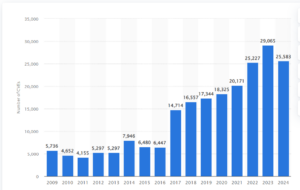
10 Essential Web Development Security Practices to Prevent Cyber Threats
In today’s digital landscape, web development security is more critical than ever. Cyber threats continue to evolve, and businesses must take proactive measures to protect their websites and applications. Whether you’re a developer or a business owner, implementing the right security practices can help prevent data breaches, hacking attempts, and other malicious activities. Let’s dive into the 10 essential web development security practices that can safeguard your digital assets.
1. Implement Strong Authentication and Authorization
One of the most effective ways to secure your web application is by enforcing authentication and authorization protocols. Use multi-factor authentication (MFA) and ensure users have role-based access control (RBAC) to prevent unauthorized access. Weak passwords and unrestricted user permissions are common vulnerabilities that attackers exploit.
2. Secure Coding Practices from the Start
Many security vulnerabilities arise due to poor coding habits. Following secure coding practices helps prevent common threats like SQL injection and cross-site scripting (XSS). Conduct regular code reviews and adhere to OWASP guidelines to minimize risks.

3. Use HTTPS and Data Encryption
Encryption is essential for protecting sensitive data. Use SSL/TLS certificates to encrypt data transmitted between users and servers. Additionally, encrypt stored data to prevent unauthorized access in case of a data breach.
4. Conduct Regular Security Audits
Regular security audits help identify vulnerabilities before attackers do. Perform penetration testing, code analysis, and vulnerability assessments to ensure your web application remains secure. Keeping logs of security events also helps in tracking suspicious activities.
5. Prevent SQL Injection Attacks
SQL injection prevention is crucial for protecting databases from malicious queries. Always use prepared statements and parameterized queries to prevent attackers from injecting harmful SQL code into your system.
6. Enforce Proper Input Validation
Validating user inputs helps prevent various attacks, including XSS and SQL injection. Ensure your web forms and APIs strictly validate and sanitize user inputs before processing them. This prevents malicious scripts from being executed on your website.
7. Implement a Web Application Firewall (WAF)
A Web Application Firewall (WAF) acts as a protective shield between your web server and potential attackers. It monitors, filters, and blocks suspicious traffic to prevent exploitation of known vulnerabilities.
8. Keep Software and Dependencies Updated
Outdated software is a major security risk. Regularly update your CMS, plugins, frameworks, and third-party libraries to ensure they are patched against the latest vulnerabilities.
9. Set Proper Security Configurations
Misconfigurations can expose sensitive data and system settings. Use security best practices such as disabling directory listing, restricting file permissions, and configuring proper security headers to minimize exposure.
10. Monitor and Respond to Security Incidents
Even with strong security measures in place, breaches can still happen. Implement a security monitoring system to detect and respond to threats in real time. Having an incident response plan ensures quick action to mitigate damage.
FAQs
1. Why is web application security important?
Web application security protects sensitive data, ensures user trust, and prevents financial and reputational damage caused by cyberattacks.
2. How does SQL injection work, and how can I prevent it?
SQL injection allows attackers to manipulate databases by injecting malicious SQL code. Prevent it by using prepared statements, input validation, and restricting database permissions.
3. What is the difference between authentication and authorization?
Authentication verifies a user’s identity, while authorization determines what actions and data they can access within the application.
4. How often should I perform security audits on my web application?
Regular security audits should be conducted at least quarterly, with additional audits after major updates or security incidents.
By implementing these web development security best practices, businesses and developers can significantly reduce the risk of cyber threats. Security is an ongoing process, so stay vigilant and proactive in protecting your web applications.




